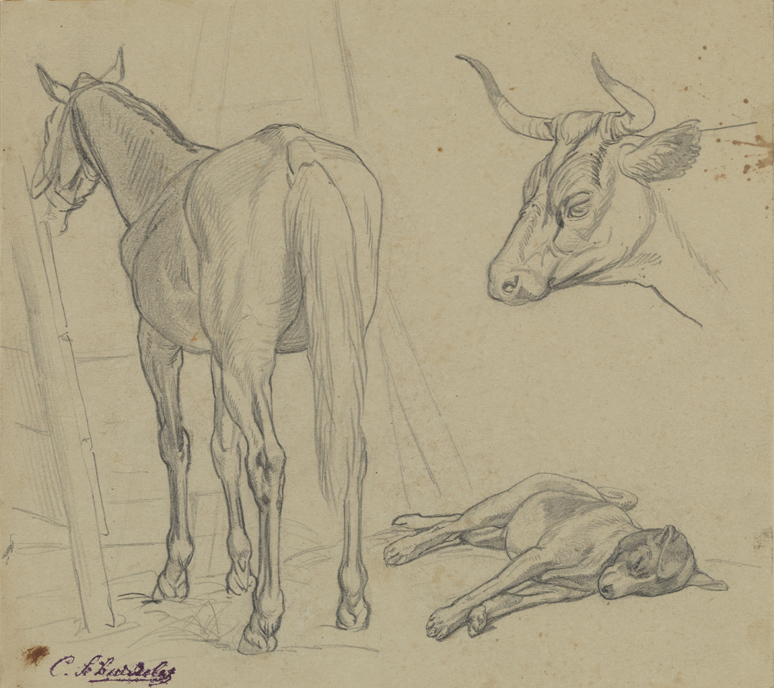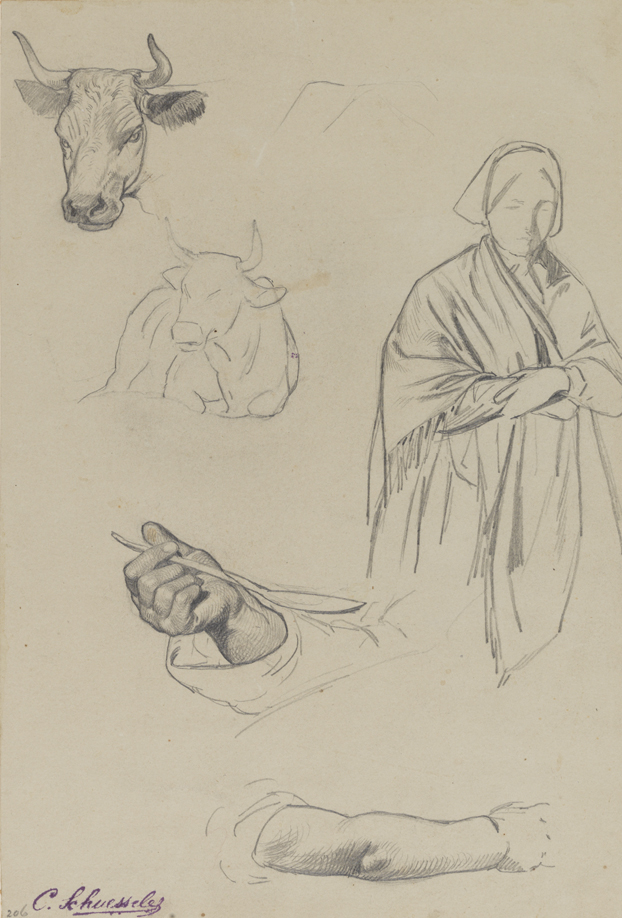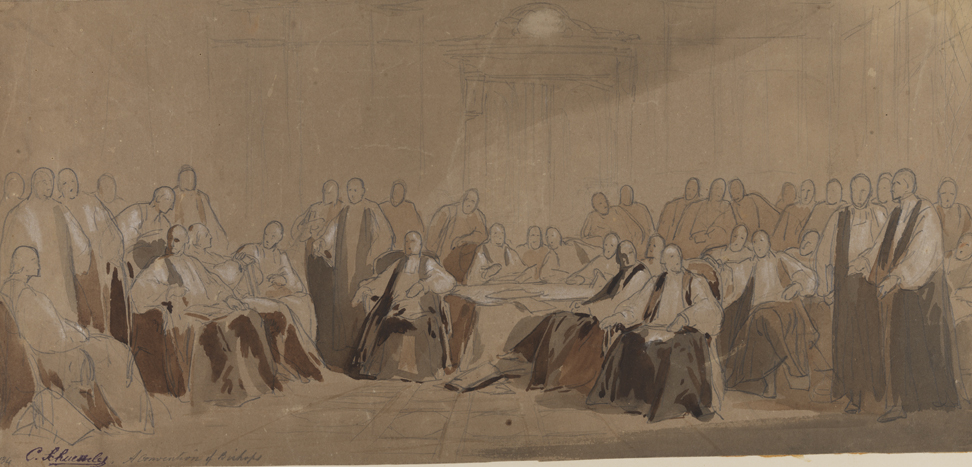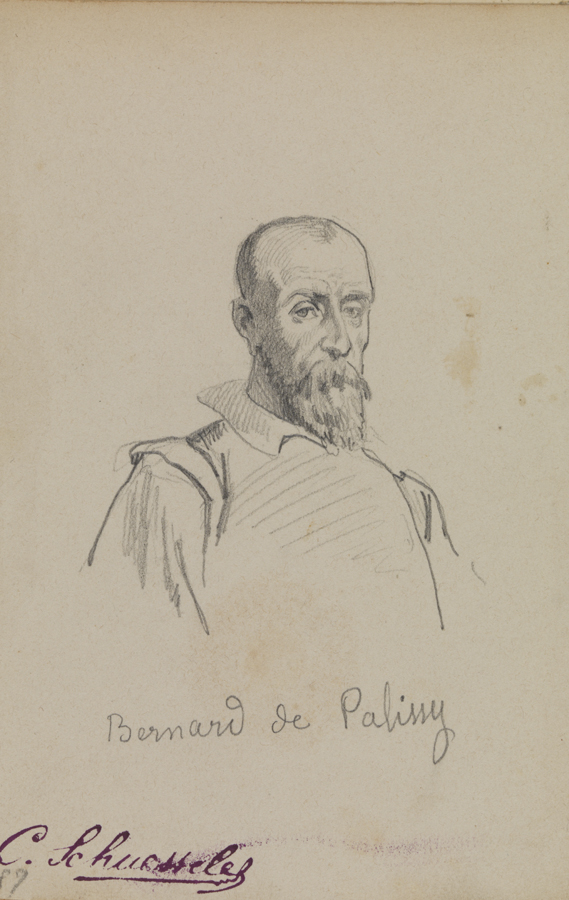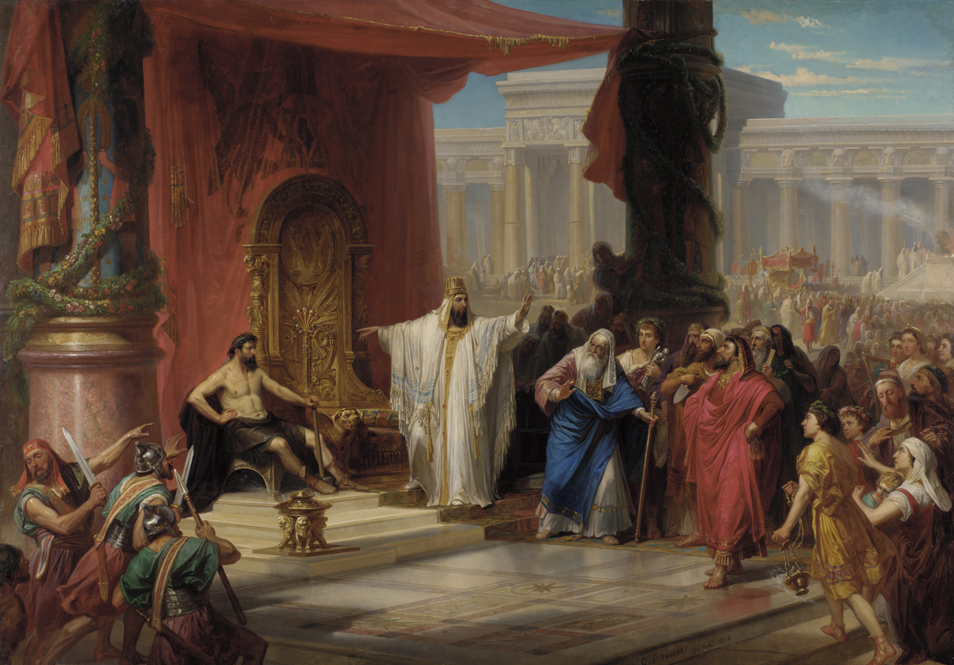
King Solomon and the Iron Worker
Christian Schussele
Alsatian-born Schussele studied at the Ecole des Beaux Arts in Paris with artists Paul Delaroche and Adolph Yvon until the Revolution of 1848 compelled him in immigrate to America. His brilliantly colored chromolithographs won him widespread admiration, even attracting the attention of Queen Victoria. Schussele began showing paintings at the Pennsylvania Academy in 1851, and by the end of the decade was a prominent figure in the Philadelphia art community. From 1868 until 1879, Schussele taught painting and drawing in the Academy school. A staunch believer in traditional academic training, he represented the conservative conventions against which Thomas Eakins rebelled. Even though Schussele emphasized drawing from casts rather than live models (a major point of contention for the younger Eakins) the Academy collection houses dozens of life drawings attributed to him. Schussele may have executed these sensitive academic drawings as studies for his dramatic historical or biblical paintings. "King Solomon and the Iron Worker" typifies these popular epics, depicting a dramatic moment from rabbinical legend, almost as a theatrical scene with exotic costumes and props. A lowly laborer, excluded from the dedication of a grand temple, has burst in pointing out that without the tools he had made the temple could not have been built. Conceding the ironworker's right to take part in the celebration, Solomon gives him a position of honor at the right of the throne.
Artist
Date of Birth
(1824-1879)
Date
1863
Medium
Oil on canvas
Dimensions
44 x 62 1/4 in. (111.76 x 158.115 cm.)
Accession #
1990.15
Credit Line
Funds provided by an Anonymous Donor
Copyright
No known copyright restrictions
Category
Subject
We're so excited you're planning to visit PAFA!
Make time for art — visit us Thursday to Sunday.
Before reserving your tickets, please review helpful information about museum hours, accessibility, building access, and special admission programs.
If you have any questions, feel free to reach out to us at visitorservices@pafa.org — we’d love to help!
